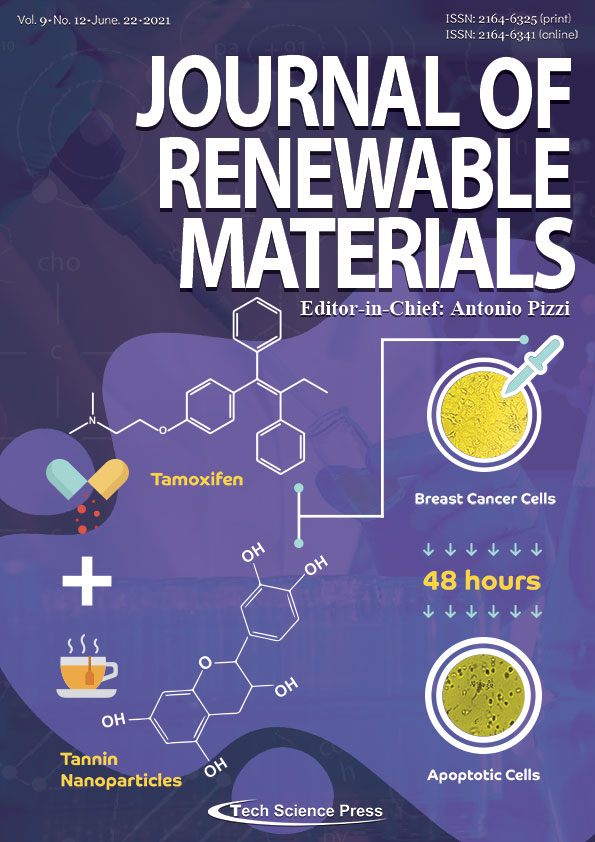Preparation and Properties of Bio-Based Flame Retardant L-APP/Poly(L-lactic acid) Composites
Qionglin Luo1, Mingliang Wang2, Hui Zhang1, Yuejun Ouyang1, Hongwei Lin1, You Shu1,*, Shengpei Su1,2,*
Journal of Renewable Materials, Vol.9, No.12, pp. 2067-2076, 2021, DOI:10.32604/jrm.2021.016255
- 22 June 2021
(This article belongs to the Special Issue: Bio-based Halogen-free Flame Retardant Polymeric Materials)
Abstract Poly(L-lactic acid) (PLLA) is a thermoplastic material with complete degradability, high biocompatibility and
excellent mechanical properties. It can replace petroleum-based polymers are currently being used in the fields
of packaging, agriculture, textiles, medical and so on. However, PLLA’s extremely flammability greatly limits its
wider application. An bio-based flame retardant L-APP/PLLA composites was prepared by melt blending of
the L-APP and PLLA. The morphology, impact properties, thermal properties and flame retardant properties
of composites were investigated by field emission scanning electron microscope (SEM), impact tester, differential
scanning calorimeter (DSC), thermogravimetric analyzer (TGA), limiting oxygen indexer (LOI)… More >
Graphic Abstract
